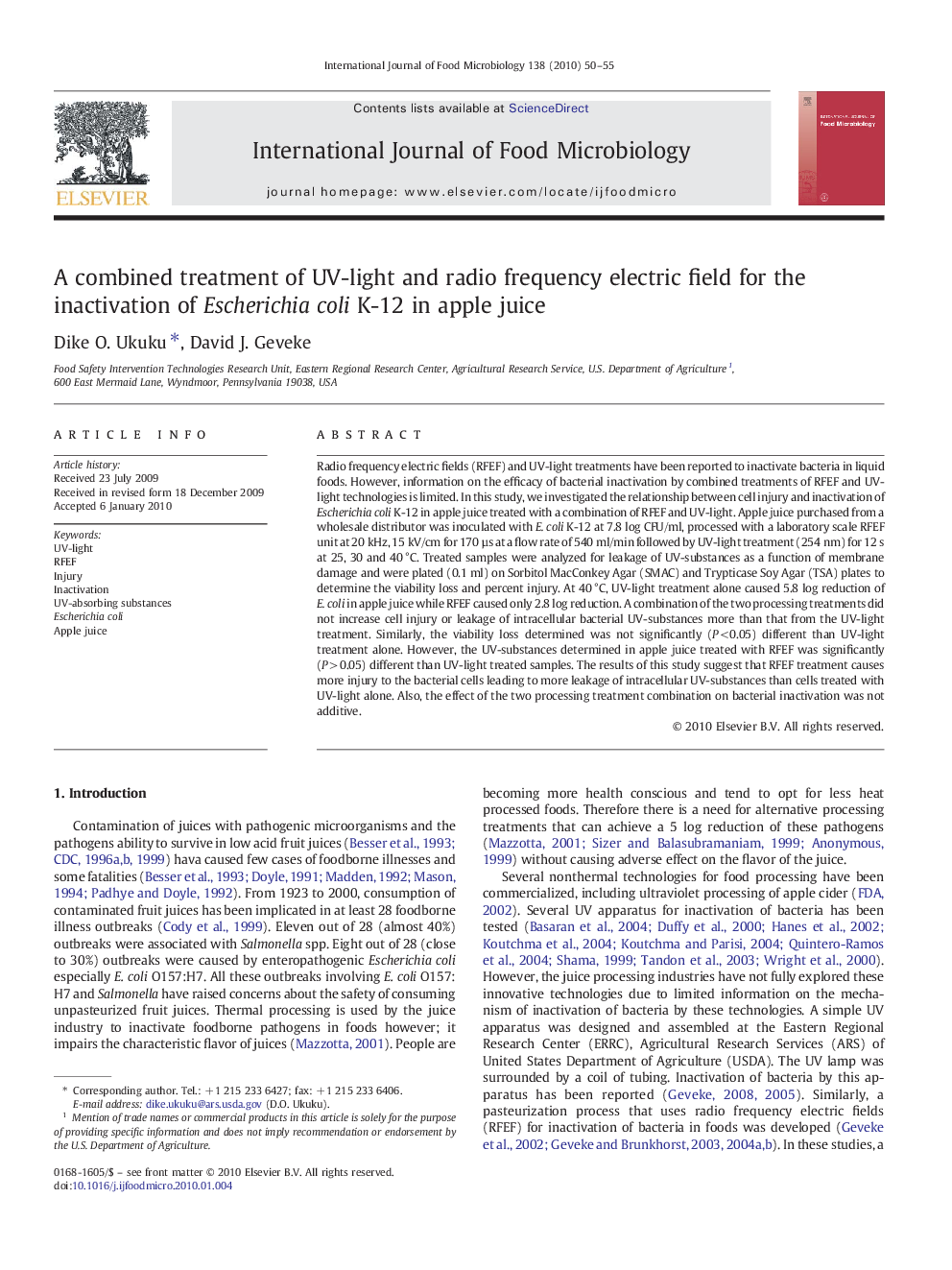| Article ID | Journal | Published Year | Pages | File Type |
|---|---|---|---|---|
| 4368369 | International Journal of Food Microbiology | 2010 | 6 Pages |
Radio frequency electric fields (RFEF) and UV-light treatments have been reported to inactivate bacteria in liquid foods. However, information on the efficacy of bacterial inactivation by combined treatments of RFEF and UV-light technologies is limited. In this study, we investigated the relationship between cell injury and inactivation of Escherichia coli K-12 in apple juice treated with a combination of RFEF and UV-light. Apple juice purchased from a wholesale distributor was inoculated with E. coli K-12 at 7.8 log CFU/ml, processed with a laboratory scale RFEF unit at 20 kHz, 15 kV/cm for 170 µs at a flow rate of 540 ml/min followed by UV-light treatment (254 nm) for 12 s at 25, 30 and 40 °C. Treated samples were analyzed for leakage of UV-substances as a function of membrane damage and were plated (0.1 ml) on Sorbitol MacConkey Agar (SMAC) and Trypticase Soy Agar (TSA) plates to determine the viability loss and percent injury. At 40 °C, UV-light treatment alone caused 5.8 log reduction of E. coli in apple juice while RFEF caused only 2.8 log reduction. A combination of the two processing treatments did not increase cell injury or leakage of intracellular bacterial UV-substances more than that from the UV-light treatment. Similarly, the viability loss determined was not significantly (P < 0.05) different than UV-light treatment alone. However, the UV-substances determined in apple juice treated with RFEF was significantly (P > 0.05) different than UV-light treated samples. The results of this study suggest that RFEF treatment causes more injury to the bacterial cells leading to more leakage of intracellular UV-substances than cells treated with UV-light alone. Also, the effect of the two processing treatment combination on bacterial inactivation was not additive.
